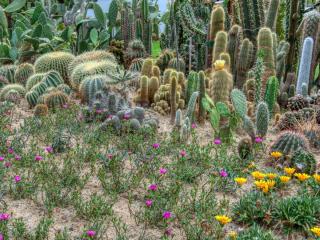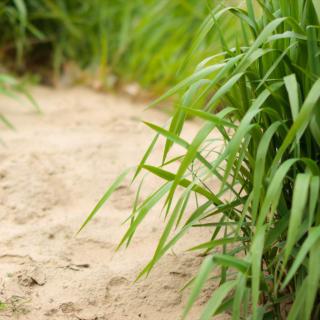

Sandy soil is both poor in nutrients and cannot retain moisture.
But sand does have major advantages when it comes to growing certain vegetables and heath plants.
But growing from soil that is almost exclusively sand can be a real hindrance for plant development.
Here are the precautions that can be taken to turn dry, poor sandy soil into a rich and fertile growing plot.
It is light and easy to work. No heavy, back-breaking clods of soil to break up.
Most of the time sandy soil stays very dry: in winter, rains drain away quickly through the sand. In summer, sand may dry out and reach record low moisture (arid) if not watered.
This makes it excellent for plants that can’t tolerate wet roots.
There are a few categories of plants that really do love growing in nearly 100% sandy soil, though extra organic matter usually helps.
Sandy soil tends to be acidic and suits certain plants perfectly, such as camellia, rhododendron, azalea, hydrangea and also gorse.
Other plants will also settle in perfectly such as the beautiful Lily of the Nile or grape vines that are used to growing in light and sandy soil.
Some soft-stemmed plants hate wet soil. They thrive in soil where water drains away fast.

Of course, carrots grow very well in sandy soil, even if there is nothing but sand.
Other vegetables can tolerate high sand ratios, as long as there is some other organic material.
Whatever you’re trying to grow, remember to add liquid fertilizer to your water when watering. This will guarantee beautiful harvests even in poor sand.

There are several ways to make it richer:
In addition to mixing these soil amendments into the sand, lather the top with thick layers of plant mulch. In time, this breaks down and turns into soil deeper down.